Royal Australian Navy Celebrates 115th Birthday
The Royal Australian Navy (RAN) is celebrating 115 years of continuous operations since its inception in 1901. Navy personnel attended birthday celebrations at sea, on shore establishments and in the nation’s capital.
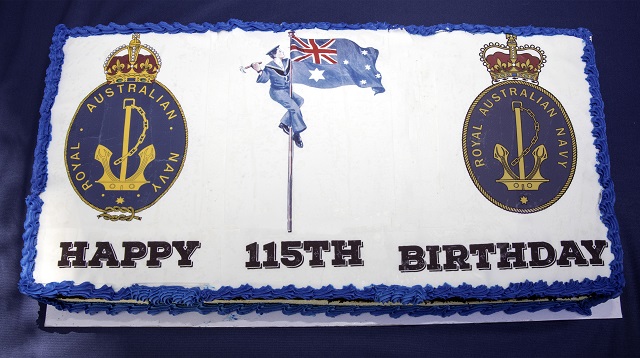
Chief of Navy, Vice Admiral Tim Barrett, led commemorations across the globe and highlighted the proud tradition of service of the modern Navy as among one of the most capable in the world.
“On any given day, more than 700 Navy personnel are assigned to operations on Australian and international waters alongside those others who continue training to fight and win at sea,” Barrett said.
HMAS Darwin is currently deployed on operations in the Middle East conducting anti-drug trafficking and maritime security patrols as part of the 31-nation Combined Maritime Forces in the region. Despite the ship’s high operational tempo, sailors and officers took the time to reflect on 115 years of continuous operations. Darwin will continue her duties as part of Operation MANITOU until she is relieved mid-year.
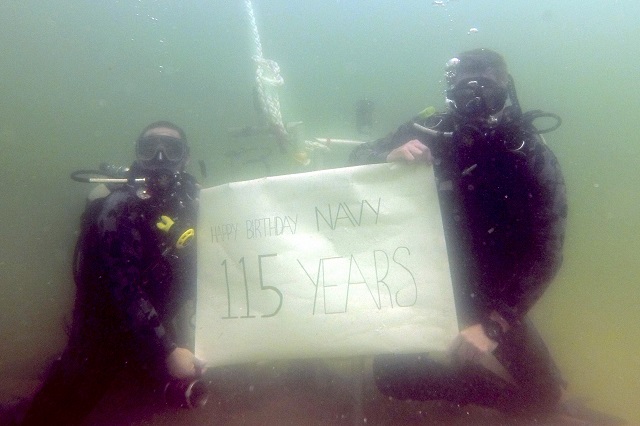
From the ship to the city for which she was named - in Darwin itself, HMAS Coonawarra’s ship’s company has marked the milestone in a uniquely tropical way, with a birthday watermelon. The ship’s company of the Navy’s busiest operational base was also joined by personnel from its 12 resident units in giving the service three cheers to celebrate the occasion.
“We’re just a little bit different here in Darwin, so we thought a ceremonial watermelon would better reflect our tropical lifestyle,” said Coonawarra’s Ship’s Warrant Officer, Warrant Officer Andrew Templeton.
“Also, we’re really focused on health and weight-loss at the moment, because so many of us are taking part in the Coonawarra Biggest Loser challenge, so a birthday cake for Navy’s birthday was never going to be the right fit for this lean, green fighting machine.”
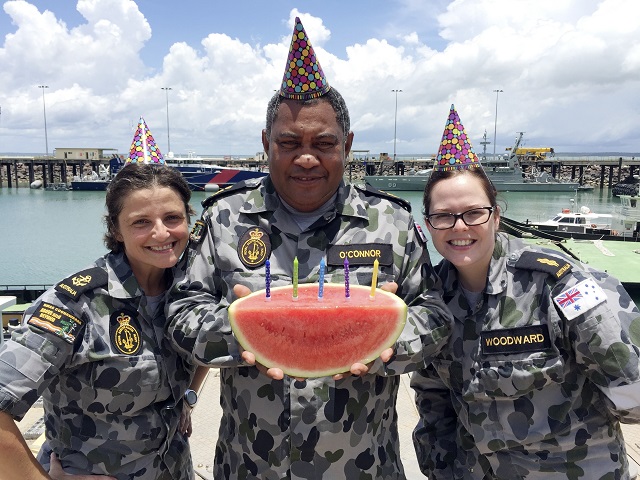
The Navy was initially known as the Royal Commonwealth Naval Force on establishment on March 1, 1901, and was the first independent Navy in the Commonwealth.
In 1911, the fleet was renamed the Royal Australian Navy and since that time has proven its ability to defend Australia and its interests, contribute to maritime security in the region and maintain a commitment to fight and win at sea.
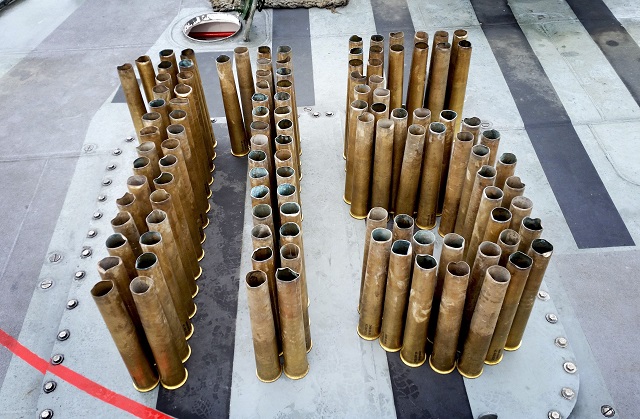
Naval History by Dr David Stevens
From settlement in 1788 to 1859, Australia depended on units detached from the Royal Navy based in Sydney to provide Naval defence. In 1859, Australia was established as a separate British Naval Station and until 1913, a squadron of the Royal Navy was maintained in Australian waters. This Australian unit was to be paid for and controlled by the Australian Commonwealth and was to be eventually manned by Australian personnel.
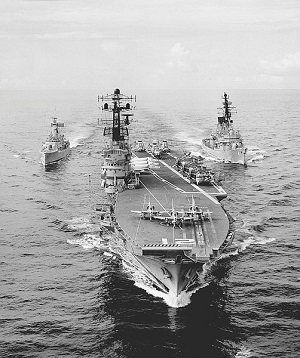 At an Imperial Conference held in 1909, it was decided to deploy to Australian waters a naval unit consisting of at least a battle cruiser, three second class cruisers, six destroyers, three submarines and a number of auxiliaries. Detailed discussions were held on August 19, 1909, between representatives of the British Admiralty and the Australian Government that resulted in a decision to proceed with the establishment of an Australian Fleet Unit. The first units of this Navy, the destroyers, HMA Ships Yarra and Parramatta, reached Australian waters in November 1910 and in the following year on July 10, 1911, His Majesty King George V granted the title of 'Royal Australian Navy' to the Commonwealth Naval Forces.
At an Imperial Conference held in 1909, it was decided to deploy to Australian waters a naval unit consisting of at least a battle cruiser, three second class cruisers, six destroyers, three submarines and a number of auxiliaries. Detailed discussions were held on August 19, 1909, between representatives of the British Admiralty and the Australian Government that resulted in a decision to proceed with the establishment of an Australian Fleet Unit. The first units of this Navy, the destroyers, HMA Ships Yarra and Parramatta, reached Australian waters in November 1910 and in the following year on July 10, 1911, His Majesty King George V granted the title of 'Royal Australian Navy' to the Commonwealth Naval Forces.
In June 1912, a third destroyer, HMAS Warrego was commissioned at Sydney and in 1913 the battle cruiser, HMAS Australia and the light cruisers, HMA Ships Melbourne and Sydney arrived in Australian waters. On the October 4, 1913, the Australian Fleet entered Sydney harbour for the first time and in October of the same year formal control of these units passed to the Commonwealth Naval Board. Thus, direct Imperial control came to a conclusion. During the same period the Royal Australian Naval College for the training of officers was opened at Geelong, Victoria. This facility was subsequently moved to Jervis Bay in 1915.
At the outbreak of hostilities in 1914, the Australian Fleet comprised a battle cruiser, six light cruisers, six destroyers, two submarines and numerous support and ancillary craft. The ships and men of the RAN operated as an integral part of the Royal Navy and served in all operational areas. The Australian Naval and Military Expeditionary Force carried in HMAS Berrima and supported by units of the Australian Fleet captured German New Guinea colonies in Australia's only national joint warfare operation to date. The total number serving in the Permanent Naval Forces at the outbreak of hostilities was 3800 all ranks. At the close of hostilities, 5263 personnel were serving. The Reserves provided a further 76 officers and 2380 for home service, and 51 officers and 1775 ratings (sailors) for service overseas.
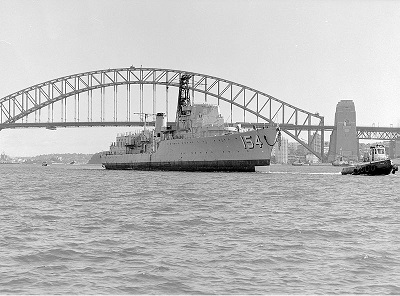 The Royal Australian Navy's first task was to protect Australia's ports, shipping and trade routes. As part of securing Australia's maritime frontiers the RAN took part in the first amphibious assault of the war when it played a major role in the capture of the German colonies in the Pacific. After this operation the ships of the RAN began the vital role of convoy escort. It was whilst escorting a convoy that the light cruiser HMAS Sydney was detached to investigate the sighting of a strange warship. This ship turned out to be the German light cruiser Emden. In the ensuing battle Sydney destroyed the Emden and thus won the RAN's first battle.
The Royal Australian Navy's first task was to protect Australia's ports, shipping and trade routes. As part of securing Australia's maritime frontiers the RAN took part in the first amphibious assault of the war when it played a major role in the capture of the German colonies in the Pacific. After this operation the ships of the RAN began the vital role of convoy escort. It was whilst escorting a convoy that the light cruiser HMAS Sydney was detached to investigate the sighting of a strange warship. This ship turned out to be the German light cruiser Emden. In the ensuing battle Sydney destroyed the Emden and thus won the RAN's first battle.
The RAN also played a supporting role in the Gallipoli campaign. HMAS AE2 became the first allied warship to penetrate the Dardanelles, but was eventually sunk by the Turkish navy in the Sea of Marmora. On the peninsular the RAN Bridging Train provided vital service to the troops as well as being the last Australians to leave Gallipoli.
The submarines AE1 and AE2 were the only losses suffered by the RAN during this conflict. The first named was lost with all hands off New Britain on the 14 September 1914, and AE2 was scuttled by her crew in the Sea of Marmora on the April 30, 1915, after she had forced a passage through the dangerous waters of the Dardanelles in support of the Gallipoli campaign.
With the cessation of hostilities and the signing of the Armistice in 1918, a world-wide period of naval retrenchment began, while subsequent disarmament conferences, culminating in the Washington Treaty of 1922 brought drastic changes to naval planning. Under the terms of the treaty, the battle cruiser Australia was scuttled off Sydney Heads in 1924. However, additions to the battle order of the early post-war RAN included six submarines, five destroyers, an additional destroyer and a number of sloops. All these vessels were acquired from the Royal Navy.
In 1924 it was decided to purchase two 10 000 ton cruisers, two additional submarines and a further decision was made to build a seaplane carrier at Cockatoo Dockyard, Sydney. HMAS Moresby was acquired on loan from the Royal Navy in 1925 for surveying duties. The two cruisers commissioned as HMA Ships Australia and Canberra in 1928, and in the following year the submarines Oxley and Otway reached Australian waters. The seaplane carrier commissioned as HMAS Albatross at Sydney in 1929.
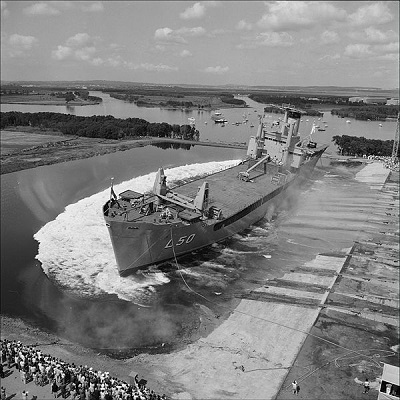 In the early thirties, lack of funds forced many economies in naval activity, one being the transfer of the Naval College from Jervis Bay to Flinders Naval Depot in Victoria. Strength of the RAN fell to 3117 personnel plus 131 members of the Naval Auxiliary Services. In 1932 the strength of the Reserves stood at 5446. At about this time, the submarines Oxley and Otway reverted to the Royal Navy.
In the early thirties, lack of funds forced many economies in naval activity, one being the transfer of the Naval College from Jervis Bay to Flinders Naval Depot in Victoria. Strength of the RAN fell to 3117 personnel plus 131 members of the Naval Auxiliary Services. In 1932 the strength of the Reserves stood at 5446. At about this time, the submarines Oxley and Otway reverted to the Royal Navy.
In 1933, the RAN added 5 additional destroyers to the Fleet to replace the ageing vessels that were at that time due for scrapping. These vessels (which later became famous during World War II as the 'Scrap Iron Flotilla') were not new, like their predecessors they were built during World War 1. In the remaining years of peace, three light cruisers were added to the Fleet, Albatross was transferred to the Royal Navy and two additional sloops were constructed in Sydney.
During the inter-war years the fortunes of the RAN fluctuated and reflected the general economic and social trends. The monotony of peace-time exercises was only broken by a punitive expedition to the Solomon Islands in 1927.
In 1939 the men of the RAN once again answered their nation's call. The role of the RAN during the Second World War was much as it was in the First, securing Australia's sea lines of communication and assisting Allied naval forces.
At the onset of war in 1939, the RAN numbered two heavy cruisers, four light cruisers, five destroyers, three sloops and a variety of support and ancillary craft. During the 27 months that ensued from the declaration of war against Germany and the Japanese attack on the American Pacific Fleet at Pearl Harbour, units of the RAN were engaged in operations against the enemy as far afield as the North, West and South Atlantic, the Caribbean, the Mediterranean, the Indian Ocean, Persian Gulf and Red Sea.
The RAN distinguished itself in the Mediterranean through the exploits of the Scrap Iron Flotilla and the cruisers, most notably by HMAS Sydney with her destruction of the Italian cruiser Bartolomeo Colleoni. Unfortunately, Sydney was later to be lost with all hands.
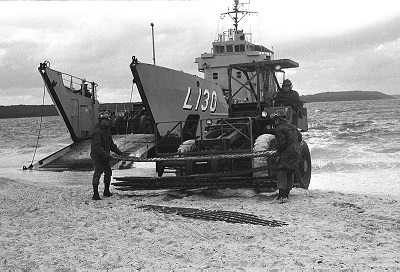 A new dimension was added when war broke out in the Pacific in December 1941 with the Japanese attacking Pearl Harbour. Australia, herself come under threat of direct attack and the ships of the RAN formed Australia's first line of defence. With Allied navies the RAN took part in the battles of Java Sea, Sunda Strait, Coral Sea, Savo Island and Lingayen Gulf. The road to Tokyo was to cost the RAN dearly with the heaviest losses resulting from the sinking of the cruisers Perth and Canberra.
A new dimension was added when war broke out in the Pacific in December 1941 with the Japanese attacking Pearl Harbour. Australia, herself come under threat of direct attack and the ships of the RAN formed Australia's first line of defence. With Allied navies the RAN took part in the battles of Java Sea, Sunda Strait, Coral Sea, Savo Island and Lingayen Gulf. The road to Tokyo was to cost the RAN dearly with the heaviest losses resulting from the sinking of the cruisers Perth and Canberra.
The total number of personnel serving in the Permanent Forces at the outbreak of war was 5010. By July 1945, the heavy demands of war had increased this number to nearly 37000 all ranks. Ship losses and personnel casualties suffered by the RAN during the conflict were substantial. The heavy cruiser Canberra, the light cruisers Sydney (sunk with the loss of all hands) and Perth the destroyers Nestor, Vampire, Voyager and Waterhen, the sloops Parramatta and Yarra and nearly thirty other RAN vessels of all types were lost as a result of wartime service. Nearly 2170 members of the RAN lost their lives during World War II.
The Royal Australian Navy paid a high price indeed, in terms of sacrifice, in the quest for victory and a lasting peace.
Since the end of the Second World War, units of the RAN have served in operations in the Korean Theatre, the Malayan Emergency and Indonesian Confrontation as part of the Far East Strategic Reserve, the Vietnam War, the first Gulf War, on-going operations in the Middle East and the 2003 Iraq War. The Royal Australian Navy has also played an active role in supporting United Nations and other peacekeeping/peace making operations throughout the world including Somalia, Cambodia, Rwanda, Bougainville, East Timor and the Solomon Islands. More recently the RAN has been involved in disaster relief operations throughout the region.
The opinions expressed herein are the author's and not necessarily those of The Maritime Executive.
